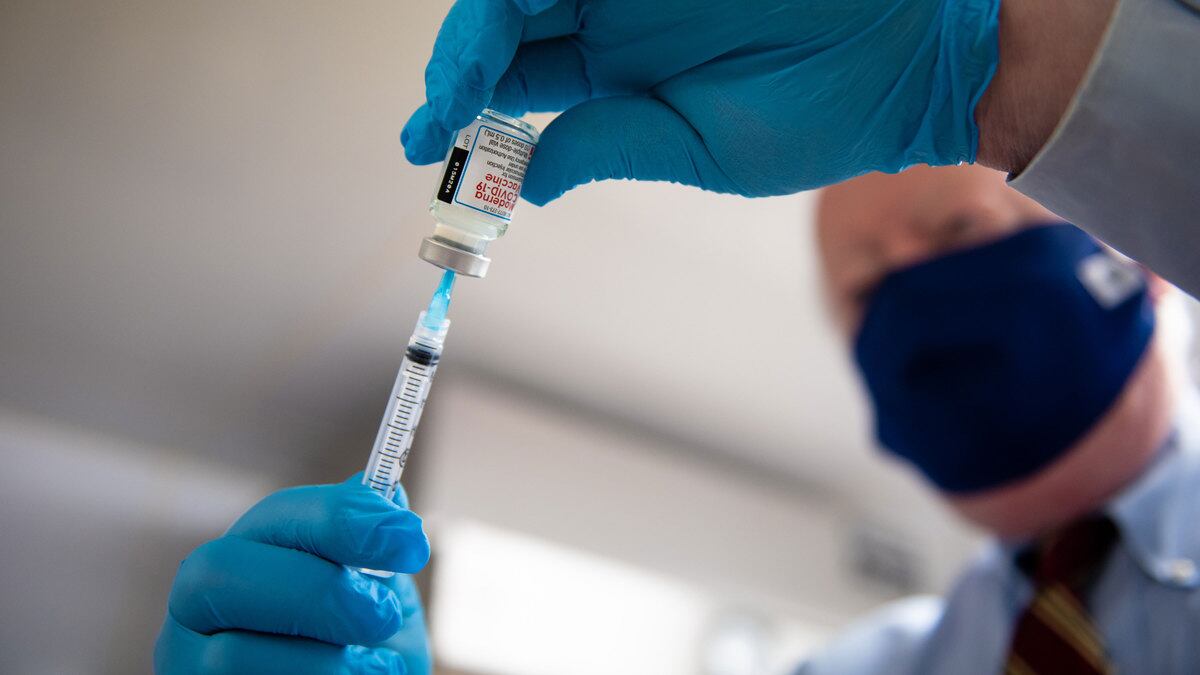There are provinces in Iran where it seems there have been more COVID cases than there are people. In other words, it’s possible that in some of the worst-hit regions, a whole lot of people caught COVID twice.
That’s not just bad news for Iran’s 84 million people. It’s also bad news for, say, the 3 million people in Mississippi and the 5 million in Alabama. Experts believe Iran is vulnerable to reinfection because it’s under-vaccinated and has relied too much on fragile natural antibodies from past infection to protect people.
But a whole lot of other places all over the world are making the same mistake. If natural antibodies aren’t preventing reinfection in Iran, there’s no reason to believe they’ll do the same in other poorly vaccinated places. “We need to be concerned,” Cindy Prins, a University of Florida epidemiologist, told The Daily Beast.
It’s hard to say exactly how bad COVID has been in Iran. Experts stress that the official stats from the authoritarian government in Tehran are at best incomplete and, at worst, manipulated.
Officially, more than 129,000 people have died of COVID in Iran since the first case was detected in the country in February 2020. That’s 155 per 100,000 people—an official rate lower than the 230 per 100,000 the United States has tallied.
The Iran figure is almost certainly an undercount, Maziar Moradi-Lakeh, a professor of community medicine at Iran University of Medical Sciences, told The Daily Beast. “There is a gap between the real numbers and the official numbers,” Moradi-Lakeh said.
The government reported 1,284 COVID deaths in the first month of the pandemic in Iran, but Moradi-Lakeh and some colleagues calculated “excess mortality”—that is, unexpected deaths—and came up with what they claim is a more accurate number: as many as 5,180 COVID deaths in the same month. They repeated the exercise for the following few months and found another big undercount.
In other words, it’s possible—likely, if you believe the research—that several times as many Iranians are dying of COVID than the government is reporting. It seems officials in Tehran are desperately trying to cover their asses as the virus ravages the country.
The infection rate is so high that, in some provinces, it appears there have been more cases than there are people. By mid-September, 11 of Iran’s 31 provinces had infection rates higher than 100 percent, according to an analysis by Mahan Ghafari, who researches virus evolution at the University of Oxford, and some of his colleagues.
It’s obvious why infections might exceed the population in a given community. “People who were infected with COVID-19 sometime during the start [or] mid [part] of the pandemic are getting infected again,” Ariel Karlinsky, a researcher at Hebrew University of Jerusalem who studies global mortality, told The Daily Beast.
Vaccination, or a lack thereof, is an important piece of the reinfection puzzle. Iran is under-vaccinated compared to many other big, industrialized countries. Officially, 46 percent of the population is fully vaccinated, compared to 58 percent in the United States, 69 percent in France and a standard-setting 83 percent in Singapore.
But the official vaccination figure is misleading, just like the official COVID death toll is. That’s because Iran, for political reasons, has pushed some of the world’s least effective vaccines. In January, Supreme Leader Ali Khamenei banned Western vaccines, including the highly effective messenger-RNA vaccines from U.S. firms Pfizer and Moderna.
“They are completely untrustworthy,” Khamenei said, without offering proof of his claim. “If they were able to create a vaccine… why do they want to give it to us? Why don’t they use it themselves?”
In fact, billions of people all over the world have gotten the Western vaccines. The safety record is stellar.
But Khamenei’s ban wasn’t about vaccine effectiveness. It was politically motivated. Instead of the best Western vaccines, Iran imported vaccines from countries that are more aligned with its rogue foreign policy. Namely, Russia and China.
The problem is, the Russian Sputnik V vaccine hasn’t been thoroughly tested. And the Chinese Sinovac vaccine is probably less effective than the leading Western vaccines. The Iranian government is also developing its own vaccines, but recently abandoned one of them owing to a lack of orders. “The government’s response has been a disaster,” Hadi Ghaemi, executive director of the New York-based Center for Human Rights in Iran, told The Daily Beast.
Khamenei eventually backtracked somewhat and allowed imports of the British-made AstraZeneca vaccine. But the damage was done.
Iran has administered nearly 93 million doses of vaccine, but the resulting protection is spotty owing to the overall poor quality of the country’s jabs. “I can say that people have accepted the currently available vaccine brands as a better option compared to no vaccination, although they aren’t ideal,” Moradi-Lakeh said.
Iran’s COVID fiasco has implications globally, including in the United States. Iran actually has a lot in common with some of the least-vaccinated U.S. states such as Mississippi, Alabama, West Virginia, Wyoming, Idaho—all of which have vaccination rates in the mid-40s.
If Iranians are getting reinfected at high rates, are Mississippians in trouble, too? Prins thinks so. “Waning immunity is a concern in states with low vaccination coverage.”
It’s increasingly clear that the natural antibodies resulting from past infection by SARS-CoV-2 fade after around six months. The best vaccines, by contrast, hold up much longer. “Long-lasting immunity from natural infection is inferior to vaccination,” Elias Sayour, a University of Florida professor of neurosurgery and pediatrics and director of the school’s Pediatric Cancer Immunotherapy Initiative, told The Daily Beast.
The fragility of natural antibodies could dash hopes that communities might achieve population-level “herd immunity” against COVID through a combination of past infection and middling vaccine-uptake. “It seems unlikely that herd immunity will be achieved given what we know about viral transmission and breakthrough infection,” Sayour said.
If you live in a state with a low vaccination rate and a low number of COVID cases, it could be because many of your neighbors caught COVID, perhaps during the summer wave of infections from the Delta variant, and still have some natural antibodies. But if vaccination still lags as those antibodies fade, cases could surge again like they did in Iran.
And just like in Iran, there might even end up being more total cases than people as COVID strikes some folks again and again.
In the United States, at least, there’s a simple fix. There are no bans on the best vaccines like there are in Iran. High-quality jabs are free and readily available all over the country.
Iran’s reinfection crisis “really reinforces the need for people who have been infected to get vaccinated,” Prins said, “so they can prolong their immunity.”






